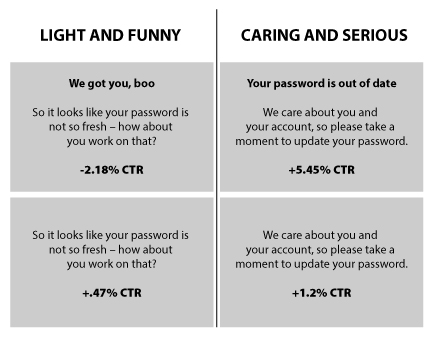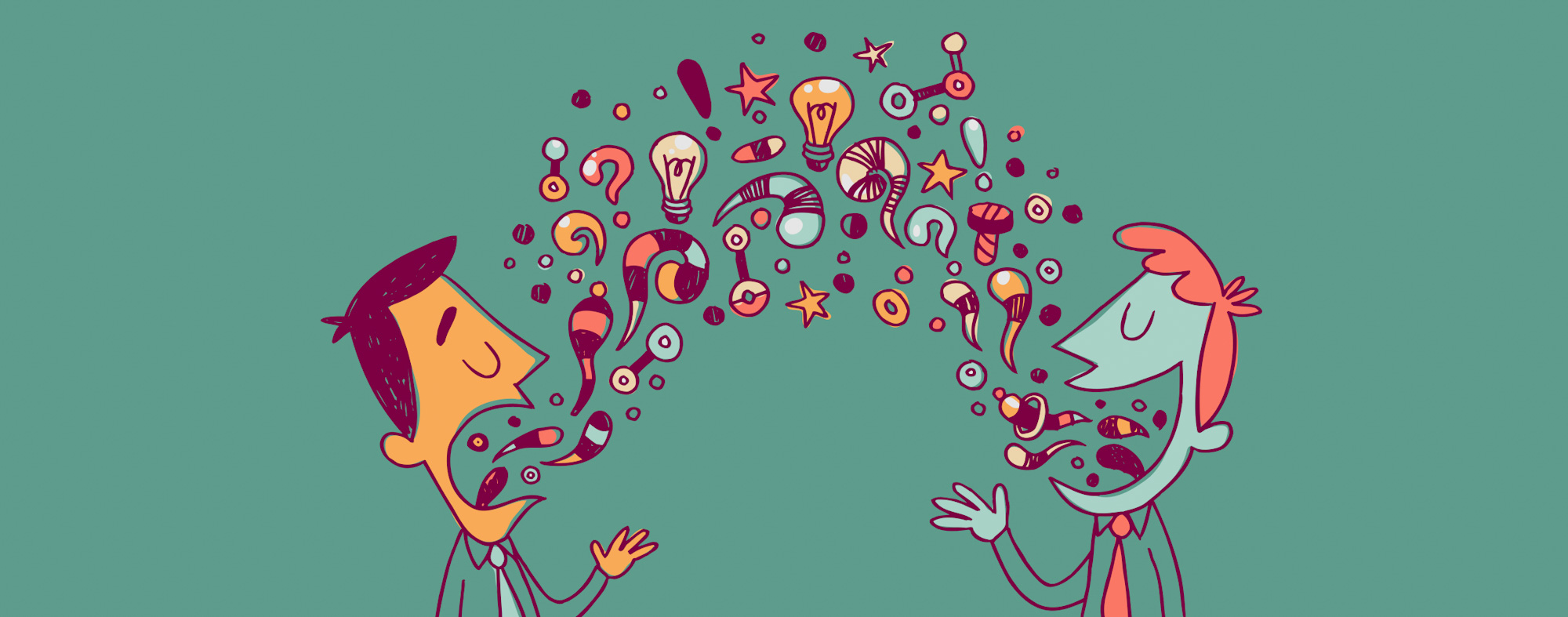With perhaps a few exceptions, you probably wouldn’t use the same tone in a job interview that you would in an argument with your cable company.
Or when trying to talk your way out of a speeding ticket.
The same is true for the content you create. Whether it’s a newsletter, a push notification or a poster for a retail store, each should have a tone appropriate for both the platform as well as the stage in the customer journey!
At the September 2017 Confab Intensive Conference in Denver, Andy Welfle, Senior Content Strategist at Adobe, and Michael Metts, Senior UX Designer at The Nerdery, offered some helpful tips about how to approach tone as writers, marketers, and content strategists.
It’s what you say and how you say it
The tone of an organization’s content brings clarity in a way few other things can. Using the appropriate tone in your content can help build a strong emotional bond between your company and your customers.
As Metts and Welfle put it, tone is not a dial you turn up for prominent content (think: headlines), and down for less prominent content (think: Terms & Service agreements). Tone should be approached as a spectrum; multiple tones can be combined and used for different messages and platforms.
This isn’t to say you should consider tone in terms of a spectrum of “boring” to “exciting.”
Even a well-written cease and desist order can make the company issuing the order come out looking like a total winner when the right combination of tones are used.
However, when it comes to tone, it is essential to proceed mindfully. Landing on the wrong part of the spectrum could potentially cost your company a significant amount of money (not to mention negative PR if it’s really bad).
And if you really want to see how much a company is invested in its tone? Check out their 404 page.
When, where, and what: Tone to-do’s
Whether you’re an in-house marketer or an agency copywriter creating content for a number of different clients, the appropriate tone will depend on a few factors.
To help find the right tone for your content, ask the right questions before you start writing.
Questions to ask your team:
- What do we want the user to do?
- What feeling do we want to display to the user?
- If this product were a person, who would it be? How would they say things?
Questions to ask about the user:
- What might the user be feeling when he or she encounters this message?
- How open to this message is this user likely to be?
Questions to ask about the scenario:
- What is the UI element?
- Where in this journey might the user be?
- What will the user be encountering next after this message?
Once you’ve answered these questions, you’ll be able to better understand whether your tone should be friendly, serious, funny, quirky, or something else completely.
Test different tones

As with all things marketing, the best way to determine which tone works well for your interface is to test different versions.
Here’s a quick example of a test our Confab presenters tried for a password reset message they wanted to send to their customers.
This test shows that while customers appreciated a little bit of playfulness, the overly quirky tone actually decreased the click-through rate.
Ultimately, customers wanted to feel assured their assets would be safe with the company. The results of the test showed that for this audience, a rational tone (with a heading) was the most effective when it came to a message about a housekeeping item like updating a password.
Make it official
After determining which tone you are going to use for various user interfaces, incorporate it into your company or agency’s style guide. One great example of effective tone guidelines (as well as a shining example of how to be generous with your content as an organization) is the Tone section of Mail Chimp’s online style guide.
Here, Mail Chimp outlines exactly what their tone is and isn’t according to their brand standards. There’s little room for ambiguity in these guidelines, making it that much easier for their copywriters to understand how to approach their content and for their content strategists to have a sense of when to use which tone.
While it can be fun to veer into quirky whenever possible, it’s important to consider where in your customer journey the recipient of this message is.
And no matter what channel, touchpoint, or platform you are using, the tone of your content will always depend on the age, demographic, and behavior of your visitors, patrons, and target audience!


